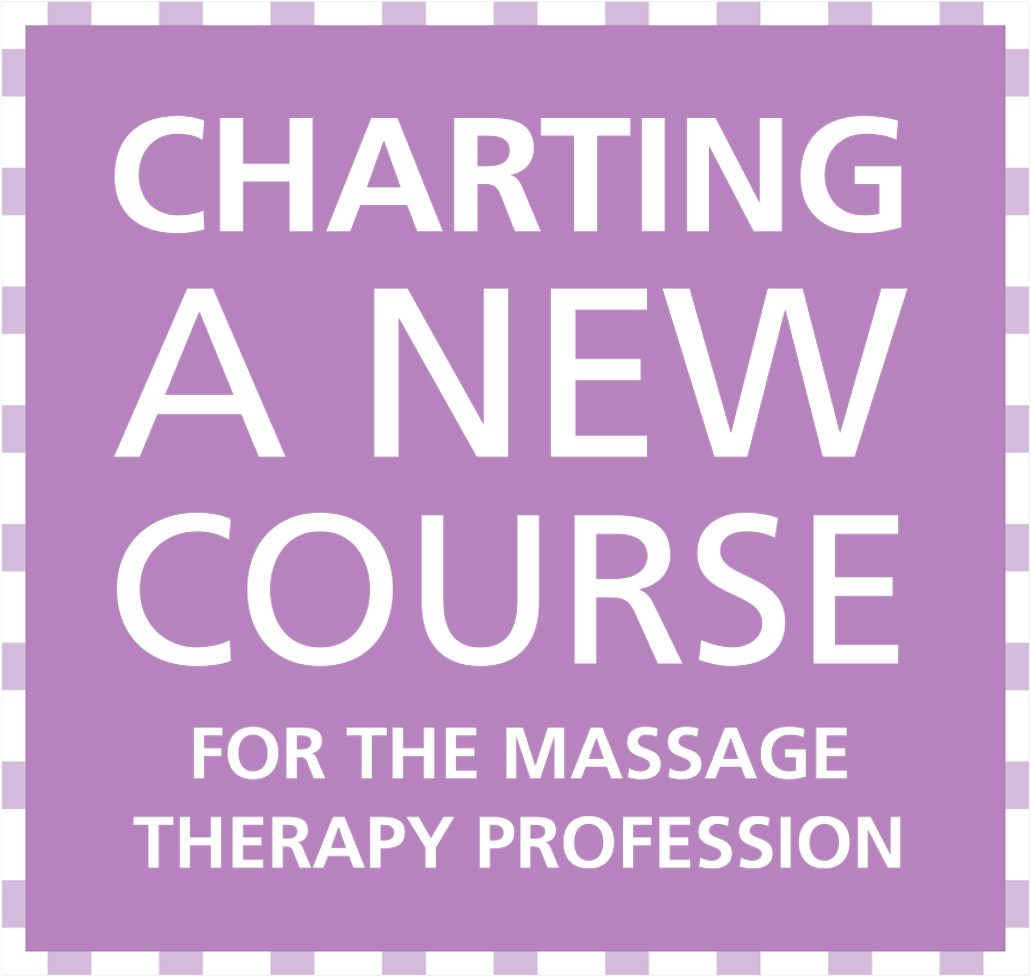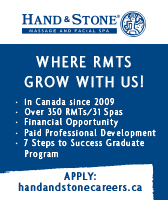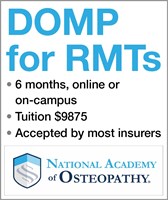|
What's Happening at the RMTAO
Welcome to the 2020-2021 Mebership Year
 Thank you for continuing to support the RMTAO! Thank you for continuing to support the RMTAO!
It's a great time to review the benefits you get as an RMTAO member to ensure you're getting what you need as an RMTAO member! This includes a free listing on RMTFind.com, discounts on phone plans, practice management software, home and auto insurance and more, updates through our magazine and newsletter, templates and tookits to help you in your practice and more!
The RMTAO is the only organization that advocates on behalf of the massage therapy profession, and we couldn't do it without your support! We're charting a new course for the massage therapy profession by facilitating new research including a scoping review currently in the works, focusing our advocacy efforts on including massage therapy within multidisciplinary teams, advocating to the insurance industry for accountability for insurance company actions, increasing opportunities for webinars and other educational options, and creating more ways for our members to connect with their patients and with each other.
Our Executive Director, Michael Feraday spoke at the Canadian Massage Conference last weekend in more detail about the RMTAO goals and prirorities for the coming year, and you can read his full speech here.
If you haven't renewed yet, you can still do so by logging into the RMTAO website.
Message from the Executive Director
I am happy to take the opportunity in the Friday File to continue to provide more  details on my priorities for the RMTAO for the coming year. details on my priorities for the RMTAO for the coming year.
One of the priorities of the RMTAO over the upcoming membership year is to develop strong relationships with insurance companies to ensure that RMTs remain fairly covered by extended health benefits plans.
Insurance companies are often unclear about their processes, so that when they ask RMTs for notes or confirmation or treatments, or when they delist RMTs or clinics, they are unclear about how or why they decide to do so. I have been meeting with several insurance companies advocating for transparency and a better understanding of their processes. There is a willingness of many of these companies to become more open with their processes and improve communications, and we will share any information we receive about insurance company processes with members as soon as we receive it.
There have also been issues brought up by our members about the aggressive and potentially unethical tactics that representatives of Sunlife’s provider listing system Lumino have used. I meet regularly with Lumino representatives to advocate for change in this area, and they have stated they recognize their issue and intend to change their sales practices to be less aggressive and harassing of our members.
Another area that is of interest both to insurance companies and to the RMTAO is the development of future research. In my many conversations with insurance company representatives, there has been interest in funding or otherwise supporting research that outlines the benefits of massage therapy, and we will continue these conversations as part of our priority of increasing the research base for massage therapy.
Many of the large issues with the insurance industry that affect RMTs directly also impact all other health professionals. I work closely with other associations through groups such as the Coalition of Ontario Regulated Health Professional Associations (CORPHA); the Coalition of Health Professionals in Ontario Automobile Insurance Services (The Coalition) and the Organization for Health Action (HEAL) to ensure that the concerns of RMTs are heard as we work together to address these issues as a group. Collective action is often more powerful that acting alone.
One area that I’ve been working on with these groups, which has come to light since the beginning of the COVID-19 pandemic is the inconsistent treatment by insurance companies of health professionals offering virtual treatments. RMTs can offer virtual appointments in certain circumstances outlined by the CMTO and we are advocating to ensure that all professions be treated the same by insurance companies when it comes to virtual appointments.
Many patients use extended health benefits to pay for massage therapy treatments, and many RMTs have to deal with insurance companies regularly, so this is one of the main areas of focus for our advocacy efforts. I will continue meeting with these insurance companies to build upon the foundations we have begun to build together.
Mental Illness Awareness Week
Mental illness awareness week is from October 4-10, which was designed to make Canadians more aware of the impacts and realities of mental illnesses.
The COVID-19 pandemic has had a detrimental impact on the mental health of many Canadians, including RMTs and their patients.
Anxiety disorders are one mental illness that negatively impact quality of life, and massage therapy is one of the complementary options that can help address the physical symptoms of those disorders.
Read more...
Download Your Insurance Coverage Certificate
If you've purchased your professional liability insurance through the RMTAO, you will need to download your insurance coverage certificate.
If you purchased insurance directly with the RMTAO, log in to the RMTAO website and click on My Insurance Coverage Certificates on the left side of your screen.
If you purchased your insurance through the Trisura Portal, you can log in to the Trisura Portal and download your certificate.
Update your RMTFind.com Listing
Now that you've renewed your RMTAO membership for the year, it's a perfect time to ensure your RMTFind.com listing is up to date!
As one of the many benefits of membership, RMTAO members have access to one free listing on RMTFind.com, which is a resource to help the public find an RMT in their area.
RMTFind.com can be searched by postal code, city or therapist.
If you have more than one practice location, you can purchase an additional listing at $12 per listing per year.
Thousands of people search RMTFind.com every month, so your RMTFind listing is a great way to market your practice!
You can verify the information in your RMTFind.com listing is correct and make any necessary changes by logging into your account and clicking on My RMTFind.com Listing on the left side of your screen.
Member Question of the Week
|
I'm considering going Inactive with the CMTO, but I'm not sure. What should I consider?
If you go Inactive with the CMTO you will not be required to complete the Strive program while Inactive, though it is suggested. You also cannot be peer assessed while you are inactive.
RMTs who will be Inactive with the CMTO for the upcoming year must submit a completed renewal form and the full fee of $200.00 for an Inactive Ceritifcate to the CMTO by November 1, 2020.
If you would like to return to General Certificate status with the CMTO after being Inactive you would either have to complete 500 hours of direct patient care in a regulated Canadian province over the past 3 years or complete the Standards and Regulations e-workshop and complete tutoring hours with a CMTO-approved tutor.
Do you have a question? Email info@rmtao.com
|
Business Tip of the Week
|
Help Your Boss Understand Your Family Commitments
When trying to balance work and family, it helps to have a supportive and understanding boss. But what happens if yours isn’t either of those things? First, brush up on your employee benefits: What are you entitled to in terms of paid leave, child care accommodations, and alternative work arrangements? You may have some rights that you aren’t aware of. Next, if you trust your boss, have a one-on-one conversation in which you’re honest and transparent about the demands on your time. It’s possible that they just don’t understand all of the commitments you're juggling. Also, exhibit empathy for your boss — the same way you want them to exhibit empathy for you. It’s not easy being a manager right now, and you may not be aware of some of the challenges they’re facing. Finally, have a plan (or a few plans) ready to pitch. They’re more likely to say yes to a concrete proposal. Getting your boss to understand and support your needs comes down to clear, honest, and frequent communication. If you’re willing to initiate that dialogue, you’ll be more likely to get the support you’re looking for.
Adapted from “When Your Boss Doesn’t Respect Your Family Commitments,” by Rebecca Knightt
|
Research Article of the Week
The impact of occupational and personal factors on musculoskeletal pain - a cohort study of female nurses, sonographers and teachers
Background: Musculoskeletal pain is common in the general population and constitutes a major public health problem. A large proportion of these conditions may be work related. The aim of this study was to explore the relative importance of physical, psychosocial and personal factors, in number of pain sites and in five specific pain sites, among women in common professions with a broad variety of occupational exposures.
Methods: A cohort of 1115 women responded to a questionnaire on ergonomic, psychosocial, personal and life-style factors, and the outcome measure of musculoskeletal pain (based on frequency and intensity of complaints at nine anatomical sites), at baseline and at follow-up. Sum scores of ergonomic and psychosocial factors were created. The importance of exposure at baseline for the number of pain sites at follow-up were estimated using ordinal regression. The importance of exposure at baseline for pain in the neck, shoulders, hands, lower back and feet at follow-up were estimated using multi-exposure Poisson regression models.
Results: High sum scores for ergonomic and psychosocial factors were of importance for a high number of pain sites, although the strongest risk factor was a high number of pain sites already at baseline. On the individual level, there was a large fluctuation in number of pain sites between the two time points. Eighteen percent reported persistent (or recurrent) ≥ four pain sites, while only 11 % did not report any pain at baseline or at follow-up. Among the specific pain sites, a high sum score of ergonomic factors was associated with pain in the neck, hands and feet. A high sum score of psychosocial factors was associated with neck and shoulder pain. The strongest risk factor was, however, pain at that specific anatomical site at baseline. Only a few of the personal and life-style factors were associated with pain.
Conclusion: An overwhelming majority of the women in common occupations were affected by musculoskeletal pain. Both ergonomic and psychosocial factors were predictive of a high number of pain sites and of specific pain sites. These findings indicate the need for preventive measures on the individual, organizational and societal level.
Arvidsson, I., Gremark Simonsen, J., Lindegård-Andersson, A., Björk, J., & Nordander, C. (2020). The impact of occupational and personal factors on musculoskeletal pain - a cohort study of female nurses, sonographers and teachers. BMC musculoskeletal disorders, 21(1), 621.
Read the full article...
The Learning Curve - The RMTAO Education Series
|
The Learning Curve - The RMTAO Education Series
The Learning Curve provides education to massage therapists in a variety of hands-on workshops and lecture-based seminars across Ontario focused on three main areas-Competency, Business, and Modality. The Continuing Education Program is designed to help massage therapists increase their knowledge base to continuously improve for both their own personal success and that of the client.
Click here for more information about the courses that are offered by the RMTAO.
|
Upcoming Community Networks and Related Activities
The RMTAO has created a feature on RMTAO.com for Community Networks. Members and non-members can access information about the latest upcoming network activities on our list of upcoming events!Don't see a Community Based Network near you? You can contact Christian Hall at christian@rmtao.com to learn more about starting one!
|
|

 details on my priorities for the RMTAO for the coming year.
details on my priorities for the RMTAO for the coming year. 





